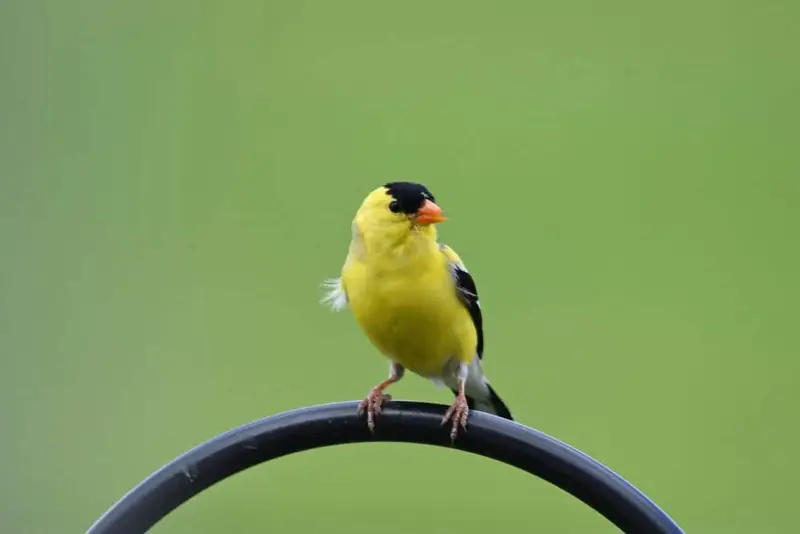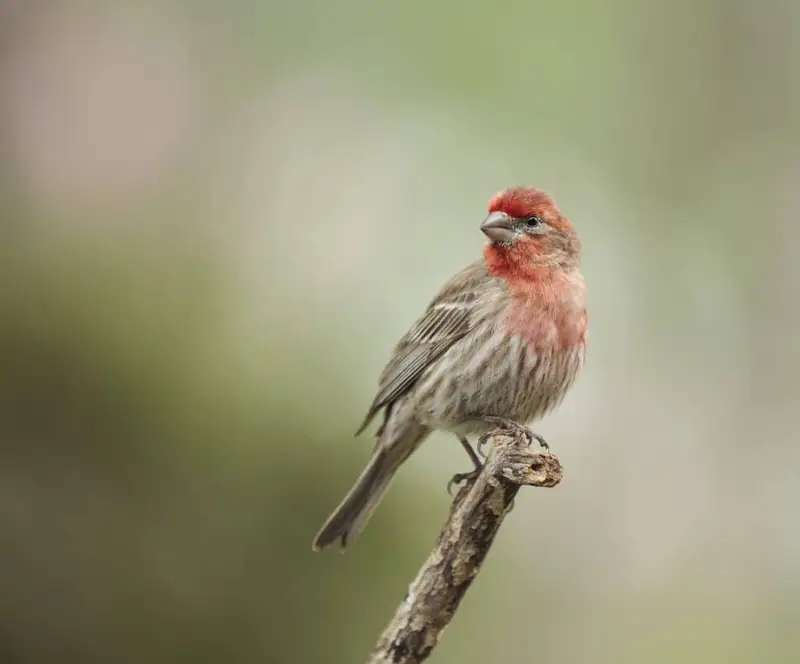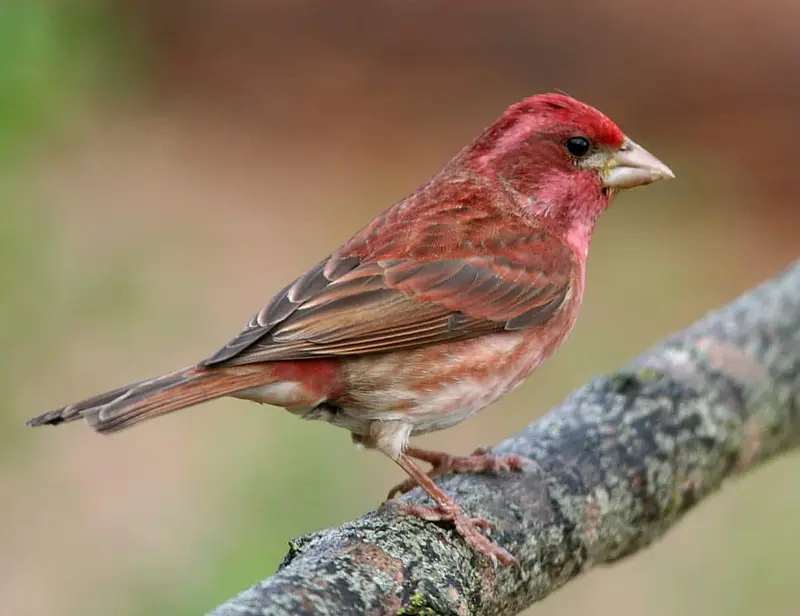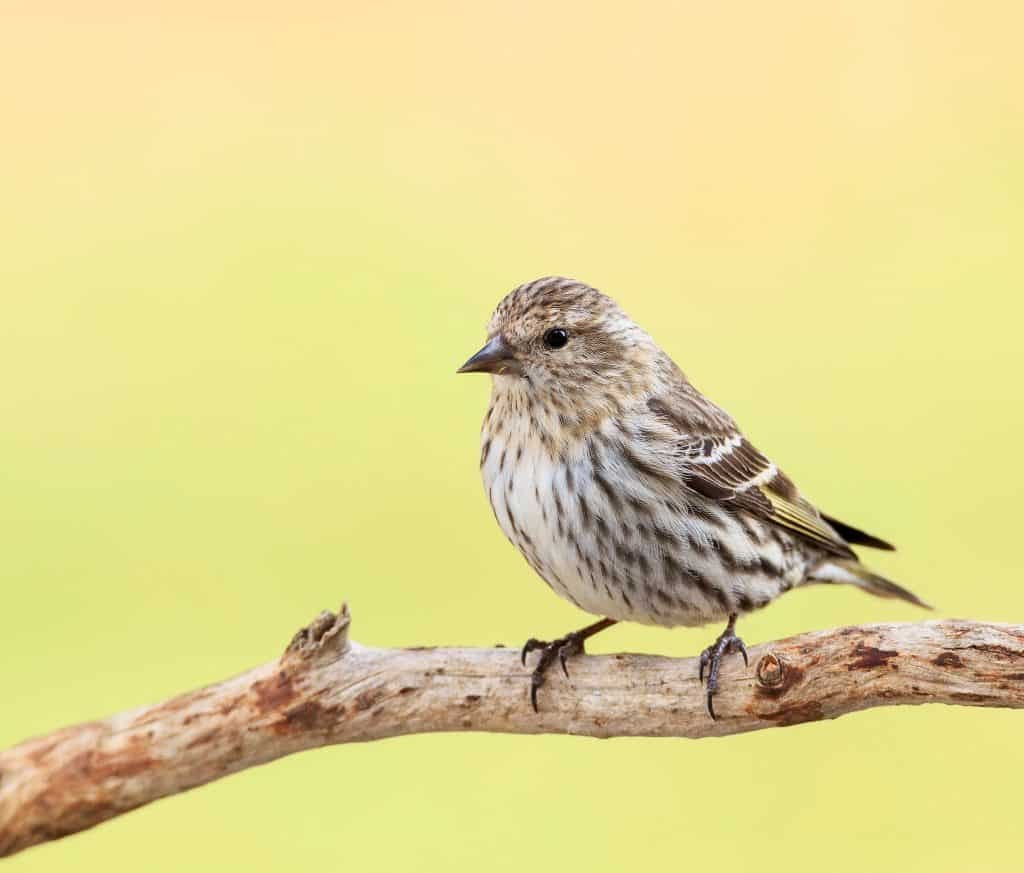In Indiana, it is possible to spot 7 different species of Finches. These are:
- American Goldfinch
- House Finch
- Purple Finch
- Pine Siskin
Want to learn more? This book on everything to do with Finches is a fantastic read!
The so-called “Crossroads of America ”, Indiana epitomizes the midwestern vibe: the crisp winds of Canada blowing past the vast waters of Lake Michigan, landing on grasslands and forests that can only thrive in such a mix.
It is a good place for backyard feeders and forest dwellers alike, including the finches listed below:
Want to attract finches? Take a look at our article!
What Finches can be seen in Indiana?
1. American Goldfinch

Like the house finch, these Canadian songbirds have a consistent presence in every state in the mainland US. This is especially true in the winter, when the flocks come down from the colder north to vacation.
Goldfinches are easily recognizable by their bright yellow plumes, which are interrupted by a stark black mask and white and black stripes on the wings.
They like meadows and places near water sources like creeks, where natural vegetation provides their favorite meals. Goldfinches aren’t quite as sociable as house finches, but they will visit backyards, parks, and little neighborhood groves.
2. House Finch

Once a domestic import to New York over a century ago, the house finch has since been freed from captivity and spread all throughout North America.
They breed sporadically wherever conditions allow, and it maintains a year-round presence in Indiana. You can find them foraging on the ground in your own backyards, especially if there is a feeder present with dandelion seeds.
They tend to overwinter in the lower places where it’s cooler, but these are among the most sociable birds in the animal kingdom, likely due to their domestic roots.
Look for the trademark rose coloring common to many finches about its face and neck, with browns and/or grays elsewhere, and a darker striped pattern about the wings.
3. Purple Finch

This finch breeds north of the border and flies south to the US north in the winter. Its name is a misnomer, as the purple finch is actually rose-colored like so many of its kin, covering its face, neck, and most of its chest.
Elsewhere the purple finch has a brown back and wings with a white underbelly, with the rose color interspersed throughout.
It hangs out in the coniferous forests of northern Indiana by the lake, but it spreads throughout as the weather changes. It is a highly-adaptable songbird, able to find food in forests or civilization, so it can be attracted to feeders and tree lots with the right bait.
4. Pine Siskin

This is another Candian breeder who winters in the states, maintaining a non-breeding presence as far south as Central America. Indiana is as good a place as any to see them, being north enough to serve as both a rest stop and seasonal destination.
The siskin forages like a bird-of-prey hunts, scouting lowlands from the edges of mixed forests for the ideal feeding spots, only these spots are berry patches instead of unsuspecting rodents.
They are recognizable by their light-brown and white vertical stripes, dark brown wings, and the streak of bright yellow near the wingtips and at the base of its body.
References
- https://www.audubon.org/field-guide/bird/american-goldfinch
- https://www.audubon.org/field-guide/bird/house-finch
- https://www.audubon.org/field-guide/bird/pine-siskin

About Us
We are avid bird-watchers who recently retired, allowing us more time to travel the world. Fortunately, we have managed to visit numerous countries around Europe, Asia, and America. Watching and photographing birds has been a passion for many years and we are making the most of the extra time on our hands!
